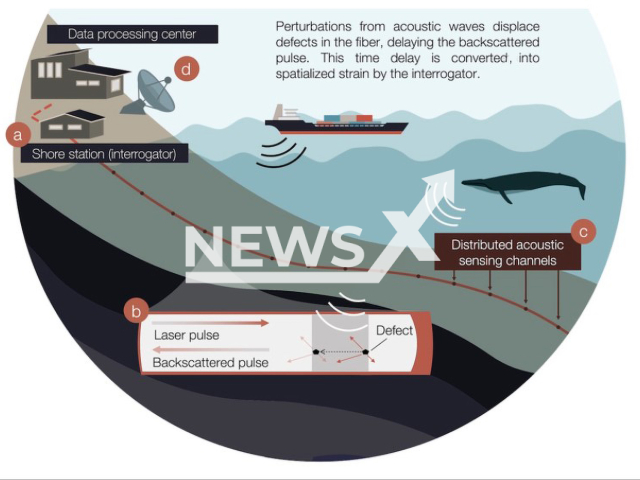 This schematic shows how the Distributed Acoustic Sensing, called DAS, works. Laser pulse is sent from the shore station through a fibre optic cable by an interrogator (a), which has evenly spaced nodes on it, called defects (b). Underwater sounds cause the defects in the fibre to be slightly displaced, which delays the backscatter a signal back to the interrogator, which then interprets the time delay as a strain on the fibre.
Note: Licensed photo(Graphic: Marte Finsmyr, Lea Bouffaut/Newsflash).
This schematic shows how the Distributed Acoustic Sensing, called DAS, works. Laser pulse is sent from the shore station through a fibre optic cable by an interrogator (a), which has evenly spaced nodes on it, called defects (b). Underwater sounds cause the defects in the fibre to be slightly displaced, which delays the backscatter a signal back to the interrogator, which then interprets the time delay as a strain on the fibre.
Note: Licensed photo(Graphic: Marte Finsmyr, Lea Bouffaut/Newsflash).
Copyrights: Graphic: Marte Finsmyr, Lea Bouffaut/Newsflash
12 July 2022
Category
Marine scientists have revealed how they can track whale movement through the oceans using spare fibre optic cables to eavesdrop on them. Individual hydrophones, or underwater microphones, had previously been used to track the large mammals as they travelled across the world’s seas. But the cost and...